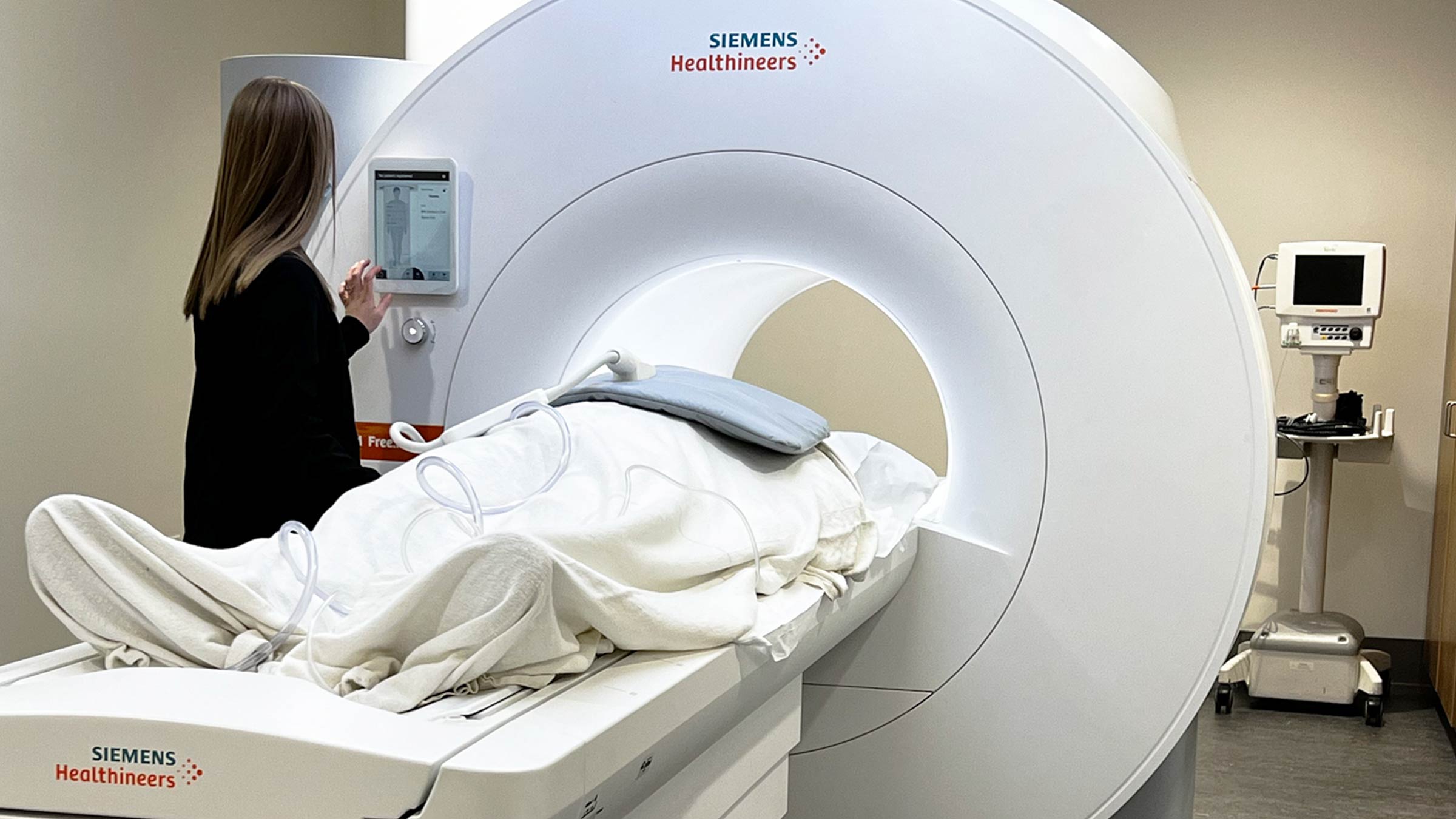- Question What is cardiac MRI?
-
Answer
Cardiac magnetic resonance imaging (cardiac MRI) is a medical imaging technology used to assess the structure and function of the cardiovascular system in a noninvasive way. By combining a powerful magnetic field, radiofrequency waves and a computer, physicians and researchers can produce clear, detailed images to help diagnose and monitor heart conditions.
- Question How is it different from an echo test?
-
Answer
An echocardiogram uses an ultrasound to evaluate the function of the heart muscle and valves. In a cardiac echo test, a technician creates moving images of the heart by pressing a wand-like ultrasound device against the chest. For a cardiac MRI, on the other hand, the patient lies on a bed scanner. The combination of magnetic fields and radio waves produces 3D images that are significantly crisper and more detailed than a traditional 2D echocardiogram.
- Question What are some advantages it provides over other forms of cardiac imaging?
-
Answer
The cardiac MRI is considered the gold standard for analyzing the function of the heart, the character of the heart tissue and blood flow. It has an edge over echocardiograms because of the superior quality of its 3D images. Unlike cardiac computed tomography (CT), which exposes the patient to repeated radiation, cardiac MRI is radiation-free.
- Question What is it used to diagnose?
-
Answer
Cardiac MRI can diagnose cardiovascular problems such as coronary artery diseases, tumors, congenital heart diseases, heart valve diseases, pericardial diseases (which affect the outside lining of the heart) and scarring after a heart attack.
- Question How long does it take to perform a cardiac MRI?
-
Answer
Once inside the machine, it can take anywhere from 30 minutes to 2 hours to complete a cardiac MRI.
- Question What is high-field vs low-field MRI?
-
Answer
High-field and low-field refers to the strength of the MRI magnet. The higher the field, the stronger the magnet. The Ohio State University Wexner Medical Center’s 0.55T is lower field than its 1.5T and 3T machines.
- Question What advantages does the 0.55T machine offer?
-
Answer
The 0.55T is available for cardiac procedures such as catheterization, which can only be performed with low-field MRI because of the risk of wires overheating under a stronger magnet. It is also useful for patients with medical devices like pacemakers and defibrillators, as well as obese and claustrophobic patients who need a wider opening.
- Question Are there any risks?
-
Answer
Cardiac MRI poses virtually no risk to the average patient. In rare cases, the contrast dye may cause an allergic reaction, dizziness, headache or nausea.







